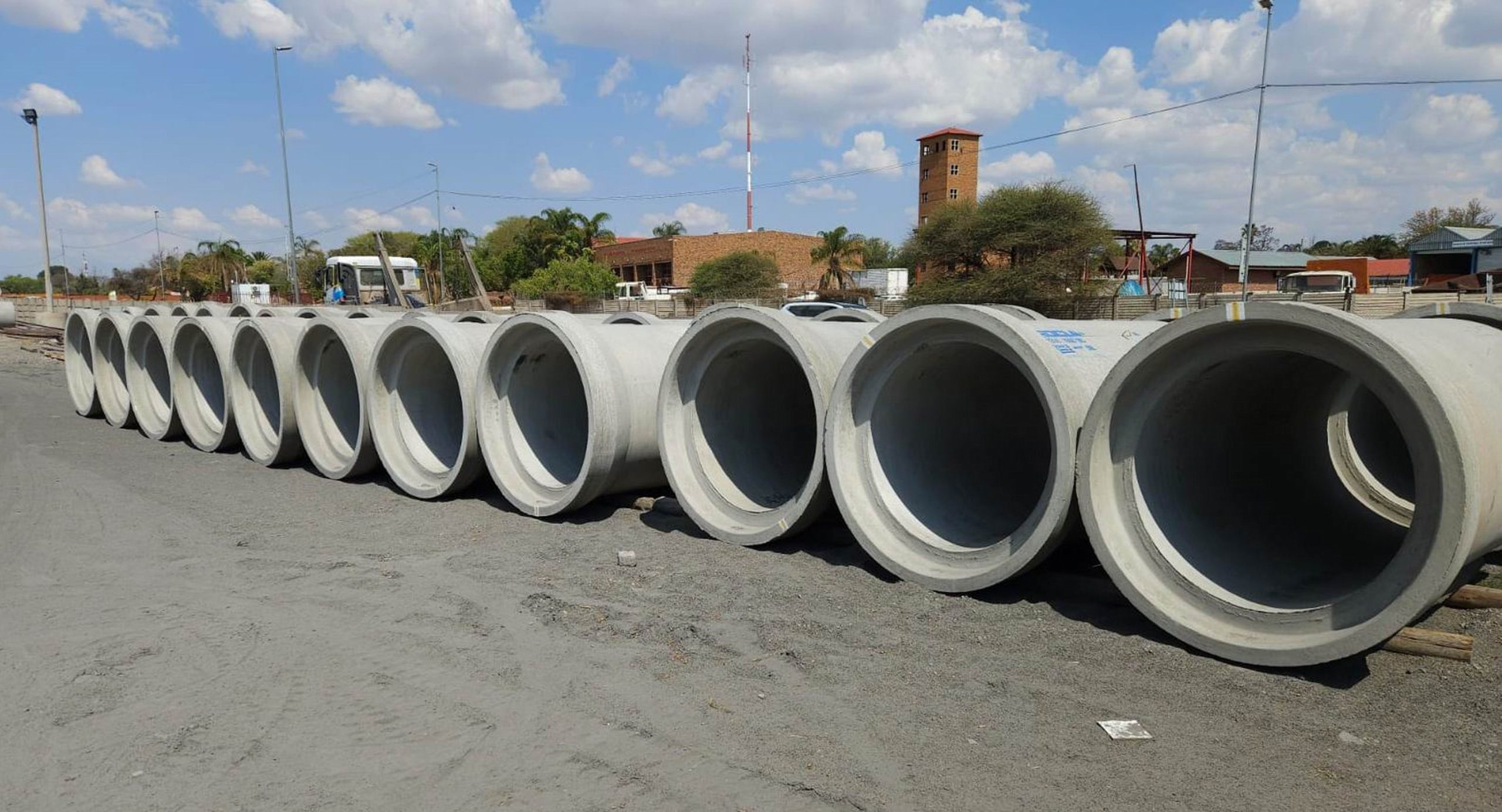Tefoma Construction selected Rocla’s Spigot and Socket stormwater pipes for use on the Mbudzi Interchange Project that is currently being constructed
Tefoma Construction selected Rocla’s Spigot and Socket stormwater pipes for use on the Mbudzi Interchange Project that is currently being constructed south of Harare in Zimbabwe.
Robert Hill, sales manager for Infrastructure Specialist Group of companies (ISG) which includes South Africa’s Rocla said “Our Spigot and Socket stormwater pipes were selected for this project due to Rocla’s reputation for the design and manufacture of high quality and durable stormwater solutions. The Spigot and Socket system is specifically designed to handle high-pressure environments while maintaining their structural integrity despite any demanding conditions”.
“We know that Rocla products undergo rigorous quality assurance testing in order to comply with industry standards and this makes them a highly recommended source of supply. Both the Harare City Council and the project consultant approved Rocla’s Spigot and Socket option. No project is without its challenges and there were a few logistical issues that had to be overcome in the delivery of the pipes, but Rocla’s team ensured that they were delivered on time “said Chris Muzondo, commercial manager of Tefoma Construction.
The original Mbudzi Roundabout had become an inefficient and outdated traffic system. As a result, the Zimbabwe Government’s Ministry of Transport and Infrastructural Development has embarked on a project to develop a modernised Mbudzi traffic interchange in order alleviate severe congestion and reduce travelling time. The Mbudzi Interchange Project entails the modification of the Mbudzi Roundabout with the development of a flyover and which includes the building of 15 bridges with 13 directly on the interchange itself.
“We supplied 29 x 1200mm pipes and 29 x 1350mm of 100D Spigot and Socket stormwater piping which in total measured 141 meters, which we believed was the ideal stormwater solution for such a large and complex piece of infrastructure development. The Spigot and Socket design ensures easy installation with a reliable watertight connection that minimises the risks of leaks making them the perfect choice for such projects,” said Robert.
The Spigot and Socket pipes comprise a rubber ring joint pipe which is a watertight pipe for use in sewer applications where aggressive groundwater is kept out of the system, or aggressive system contents are kept within. The Spigot and Socket type joint is formed with a widening of the wall of the pipe on the one end.
Rubber ring system used compromises a rubber “O” type ring, which is located on the tip of the spigot end of the pipe. When the pipes are joined the rubber ring is compressed and rolls away from the tip down the barrel.
No lubrication is required nor should it be used. The seal is formed between the socket (or female end) and the outside of the spigot (or male end). Stormwater and sewer pipes are manufactured and tested according to the requirements laid out in SANS 677 (concrete non-pressure pipes) and SANS 676 (concrete pressure pipes).
The pipes are supplied in lengths of 2,44m or 1,22m and in 50D, 75D and 100D strength classes. Customised special strength designs can be accommodated. Rocla Spigot and Socket stormwater solutions have also recently been applied to the main sewer line repairs at Queen Nandi Drive, KwaZulu Natal after recent flooding in the area, as well as to projects in Cape Town and Mozambique.

